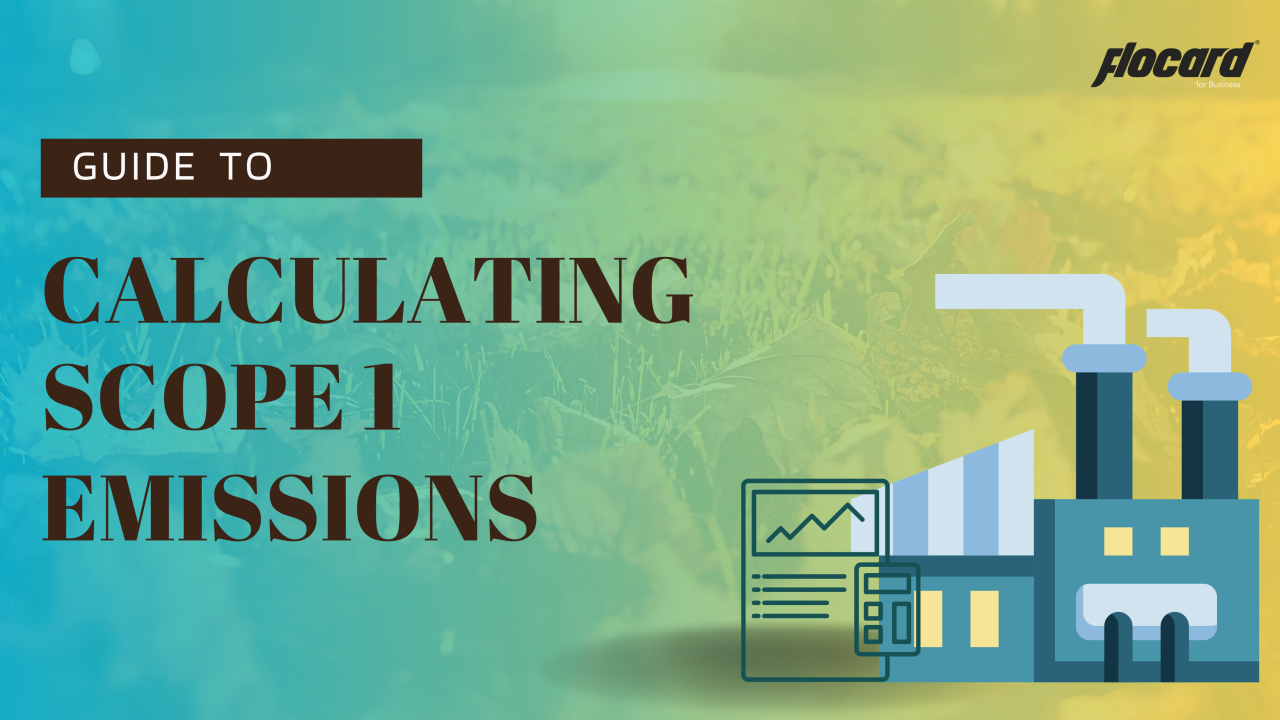A Step-by-Step Journey Through Calculating Your Organization's Direct GHG Emissions

Navigating the Carbon Credit Pathway: A Leap Towards Environmental Sustainability
Climate change is a long-term change in weather conditions over time. With greenhouse gas emissions on the rise, international organizations, the global community and corporate firms have come together to measure and manage GHG emissions. This is crucial to tackle climate change and achieve sustainable development goals.
Greenhouse Gas Protocol (GHG Protocol) has classified GHG emissions in “scopes” as Scope 1, Scope 2 and Scope 3. This classification ensures that organizations and companies identify their GHG emissions hotspots in the given scopes and target managing these scopes by implementing remedial measures and sustainable solutions.
Scope 1 emissions
Scope 1 refers to direct greenhouse gas emissions that come from sources owned or controlled by an organization. Scope 1 emissions include emissions from stationary combustion, mobile combustion, physical and chemical processes and fugitive emissions.
These emissions are crucial to calculate as they contribute to the majority of GHG emissions in the environment by the industries. Mapping and measuring these emission sources will play a crucial role in achieving emission reduction targets and bringing organizations to the global cause of sustainability.
It is crucial to determine some prerequisites before calculating scope 1 emissions. This includes determining inventory boundaries for the organization. It includes the understanding of two important boundaries namely:
- Organizational boundary - This includes the emissions resulting from the company’s operations and facilities in the organization. This boundary determines which operations and facilities will be accounted for in the GHG inventory.
- Operational boundary - The boundary includes direct and indirect emissions resulting from company operations or activities. They are defined by “scopes” as scope 1 and scope 2.
It is important to set the boundary for GHG inventorization and then proceed with classifying GHG emissions in scopes 1 and 2. This must be followed by GHG calculation in terms of carbon dioxide equivalent.
Overview of the step-by-step process
Scope 1 emission calculation is a systematic process which begins with creating GHG inventory and ends with handing calculations in the form of reports to the corporates. Here is the step-by-step breakdown of the scope 1 calculation.
-
A. Identify sources of emissions
Scope 1 emissions are directly owned or controlled by an organization. This means everything that comes under the scope of organisational boundaries. This includes all the leased assets of the organization which are under the legal control of an organization. It thus becomes crucial to correctly define the direct sources of GHG emissions after setting the inventory boundary.
-
B. Collection of activity data
After setting inventory boundaries and finding the scope 1 emissions, it is crucial to find the activity data for all the direct emissions in the organization. The activity data can be primary or secondary. Primary data is the best data for an organization. Secondary data is best used for estimation.
Primary and secondary data for direct emissions are as follows:
-
Stationary combustion
Fuel consumption data dependant on the type and quantity of fuel used forms the primary data. The amount of dollars spent on fuel and the type of fuel constitute secondary data.
-
Mobile combustion
The quantity of fuel combusted for each fuel type forms the primary data. The secondary data contains the dollar amount spent on fuel, vehicle model and year, and distance travelled.
-
Fugitive emissions
-
Physical and chemical processing
-
-
C. Selection of calculation approach
GHG emissions from different sources occur from direct measurement or analysis of fuel input. Direct measurement of carbon dioxide emissions can be through the Continuous Emissions Monitoring System (CEMS). This is done through a monitor which measures hourly average carbon dioxide per cent concentration by volume of flue gas or a flue monitoring system which measures the volumetric flow rate of flue gas to determine carbon dioxide concentrations. CEMS cannot determine methane and nitrous oxide concentrations.
The fuel analysis method is used to calculate carbon dioxide emissions by determining the carbon content of fuel combusted through fuel-specific information or emission factors in a specific year. This method is dependent on the mass balance approach which involves carbon content factors applied to fuel inputs to calculate emissions. Another method is to adopt a stoichiometric basis specific to a facility or process to calculate emissions. Fuel analysis is generally used in organizations or facilities where there is no installation of CEMS.
-
D. Collect data and choose emission factors
After the collection of data from various direct sources, it becomes important to choose an emission factor and apply it to calculate emissions. Emission factors are calculated ratios relating GHG emissions to a proxy measure of activity at an emission source. This is different for the types of fuel used, combustion efficiency and emission control measures. Emission factors are drawn out of IPCC guidelines.
It is important to note that when monitoring GHG emissions is not direct, then one can adopt the fuel usage data to calculate emission data. The companies must choose the correct calculation approach relevant to their reporting context.
-
E. Calculations: Basic equations
The basic equation to calculate GHG emissions is given below.
Activity data X Emission factor = Tonnes of emissions (t)
Tonnes of emissions (t) X Global warming potential = Carbon dioxide equivalent (CO2 e) of emissions.
Activity data refers to the data on an activity resulting in emissions. This can be electricity use (in kilowatt-hours), distance travelled (in kilometres) and gasoline use (in gallons). Most companies use the purchase records of fuel to find the activity data. Moreover, industrial companies should consult sector-specific guidelines from GHG protocol, industrial associations and governmental agencies.
Emission factors convert activity data to emission values. It may be expressed as a kilogram of CO2 per air kilometre travelled, pounds of CO2 per kWh of electricity or kilograms of CO2 per litre of gasoline/petrol. Emission factors are published by various entities including governmental agencies and intergovernmental organisations like GHG, IPCC, CDP etc., It is important to use the most recent emission factor while maintaining consistency.
Global warming potential (GWP) is the measure of how much a GHG contributes to global warming relative to CO2. GWP is used to convert tonnes of a GHG to tonnes of carbon dioxide equivalent to calculate total emissions using a common unit. Higher GWP means more warming potential. It is sourced from IPCC assessment reports which are updated regularly.
-
F. Apply calculation tools
GHG protocol lays out guidelines and tools for the calculation of scope 1 emissions. These tools are peer-reviewed and are options. The companies can use their GHG calculation methodology which must be consistent with GHG protocol. The two types of tools are sector-specific and cross-sectoral.
-
G. Roll up data to the corporate level
To report a corporation's total greenhouse gas emissions, businesses usually need to collect and summarize data from multiple facilities, which may be located in different countries and business divisions. Careful planning is crucial to minimize the reporting burden, mitigate errors, and ensure consistent data collection. Ideally, corporations will integrate GHG reporting into their existing tools and processes and leverage relevant data already collected and reported by facilities to various stakeholders. The selection of reporting tools and processes depends on the existing information and communication infrastructure, as well as the desired level of reporting detail from corporate headquarters.
Companies generally assess greenhouse gas (GHG) emissions by identifying emission sources, selecting calculation methods, gathering activity data, applying emission factors, and consolidating data to the corporate level. This requires third-party verification to ensure correct emission calculation.
Join Flocard , to embark on a new journey in driving sustainable initiatives at individual and corporate levels. Flocard is a solution to your sustainability problems.
